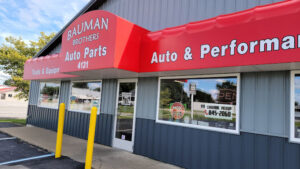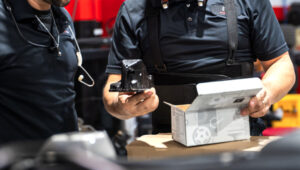Low scrappage rates in the U.S. are boosting aftermarket size and changing the mix of aftermarket products and brands used
Fort Wayne, Ind.—Vehicles in operation (VIO) are a primary determinant of the volume and mix of the light vehicle aftermarket products and brands in the U.S. The VIO is shaped by new car and light truck annual sales and the vehicle scrappage (vehicles removed from operation). The relative importance of these two factors is shaping the VIO and, therefore, the aftermarket is changing.
“Over the past 3 years (2020 to 2022) new vehicle sales have moved sharply lower, with annual volume down approximately 15%,” Lang Marketing stated in a new report.
Lang projects that new vehicle sales will remain weak through 2024 and, perhaps, longer. Accordingly, the number of vehicles in operation and their age and nameplate mix are changing based on the number and type of vehicles being scrapped each year.
The following are key takeaways from the analysis.
Low Scrappage Rates
The vehicle scrappage rate in the U.S. historically increased with the growth of new vehicle sales and declined when the new car and light truck market slumped. Before COVID-19, light vehicle sales were running at a record-high rate and, contrary to historical patterns, annual vehicle scrappage was low.
Annual Scrappage Rates
From 2000 to 2010, annual scrappage averaged more than 5.3% of vehicles in operation.
In 2013, the light vehicle scrappage rate rose to 5.7%. However, in 2016 when new car and light truck volume reached 5 million more than five years earlier, the scrappage rate fell to 4.4%.
Despite record-high new car and light truck annual sales between 2015 and 2019 (yearly sales averaged more than 17 million), annual scrappage averaged only 4.5%, significantly lower than the 5.2% average annual scrappage over the previous five years (2010 to 2014).
Scrappage during 2020 through 2022 averaged below 5.0%, despite some “catchup” in scrappage stemming from the low annual levels of the previous five years.
Differing Scrappage Rates by Vehicle Features
The annual scrappage rate varies by three vehicle features: age, nameplate and power plant.
With new vehicle sales at a low ebb since 2020, scrappage has taken on a greater significance in shaping the VIO according to these four vehicle features:
• Vehicle Longevity and Age
The average life of vehicles in operation has significantly increased over the past three decades as manufacturing techniques have improved and the durability of materials used in new cars and light trucks has increased.
These factors have boosted the age at which vehicles are scrapped. In addition, the increasing value of used vehicles has raised the cost threshold at which vehicles are scrapped due to accidents.
Accordingly, even as the average age of vehicles increased and the number of older cars and light trucks on the road climbed, the scrappage of older vehicles has been moderate among age groups that traditionally had high scrappage rates.
• Domestic Nameplates
Domestic nameplates account for a minority of new car and light truck sales but represent a large share of vehicle scrappage. This reflects the higher average age of domestic nameplates compared to their foreign counterparts.
Despite averaging more than 53% of cars and light trucks in operation from 2016 through 2021, domestic nameplates represented two-thirds of light vehicle scrapped during those years.
• Foreign Nameplates
The VIO share of foreign nameplates was one-third greater between 2016 and 2021 than their 33% share of vehicles scrapped during this time. This reflects the younger average age of foreign nameplates and their higher average value compared to domestic nameplates of the same age category.
• Scrappage by Power Plant
Almost all vehicles scrapped in the U.S. are Internal Combustion Engine (ICE) models. Accordingly, low annual scrappage allows greater numbers of ICE vehicles to remain in operation, boosting the size of the ICE aftermarket.
In contrast, low new vehicle sales diminish the number of ICE vehicles in operation, but ICE cars and light trucks still account for the predominance of cars and light trucks on U.S. roads (99% in 2022).
In Conclusion — Aftermarket Impact
Low scrappage rates in the U.S. are boosting aftermarket size and changing the mix of aftermarket products and brands used. This occurs in three ways.
First, low scrappage boosts the average age of vehicles in operation and the population of older cars and light trucks on the road. Since older vehicles use more aftermarket products per mile than newer models, low scrappage helps to increase aftermarket sales.
Second, since vehicle scrappage is concentrated among domestic nameplates, low rates mean that more domestic nameplate cars and light trucks remain in operation longer. This slows the rate at which the domestic nameplate aftermarket is declining.
Third, low scrappage rates help to maintain the number of ICE vehicles in operation since virtually all vehicles scrapped (besides those in accidents) are ICE vehicles. Accordingly, low scrappage boosts the ICE aftermarket.









Comments are closed.